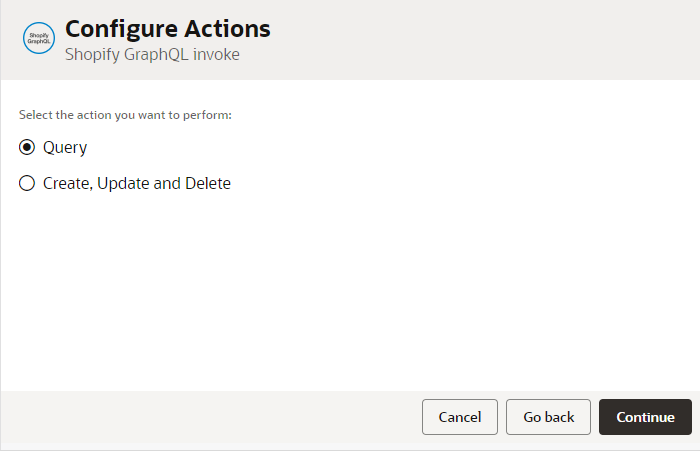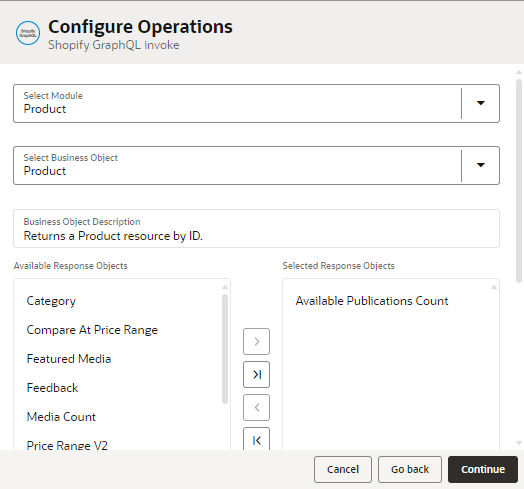Shopify recommends that you transition from REST APIs to GraphQL APIs by February 1, 2025. This recommendation means that integrations must now utilize the GraphQL APIs. In response to this shift, Oracle Integration Cloud (OIC) introduces the Shopify GraphQL Adapter, which provides seamless access to Shopify applications through GraphQL APIs. For improved performance and to maintain ongoing functionality, Oracle advises customers to transition to the new Shopify GraphQL Adapter, replacing the existing GraphQL adapter, and to use the Shopify GraphQL Adapter for all future integrations.
Who Is Affected?
Customers with existing integrations using the Shopify Adapter should consider transitioning to the Shopify GraphQL Adapter to ensure ongoing functionality and to leverage feature enhancements. For specific guidance on the transition, see the Shopify migration documentation.
Moving forward, use the Shopify GraphQL Adapter for all new integrations, which aligns with Shopify’s latest API standards that offer improved performance and more efficient data handling.
Note: Oracle Integration Generation 2 customers must upgrade to Oracle Integration 3 to adopt the Shopify GraphQL Adapter and align with Shopify’s latest API standards.
Transition Steps from Shopify REST to GraphQL Adapter
- Identify Integrations
Review and list all integration flows using deprecated REST endpoints. - Develop New Integration Flows / Amend the Existing Integration Flow:
- Invoke-based Integrations:
- Create a Connection
- Create a new connection using the Shopify GraphQL Adapter.
- Configure the Invoke Flow
- On the Actions page, select the appropriate actions (Query or Create, Update and Delete).
- On the Operations page, select the relevant module, business object, and response object that you want to retrieve from Shopify.
- Use the Edit Query button on the Operations page to modify queries as needed.
- Adjust Integration Mappings: After completing the wizard configuration, adjust your integration mappings to align with Shopify GraphQL data structures.
- Create a Connection
- Invoke-based Integrations:


- Trigger-based Integrations: These must be re-developed to subscribe to webhooks using GraphQL endpoints.
Note: To know more, visit Migrate from REST to GraphQL.
